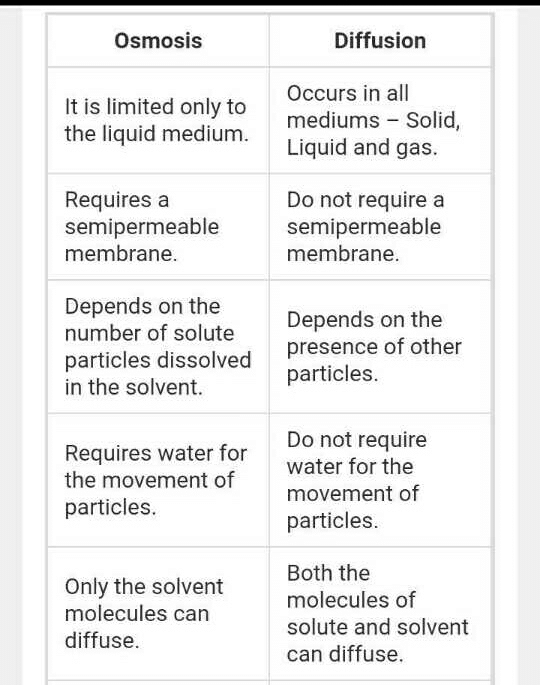Class 9 Exam > Class 9 Questions > What is the difference between diffusion and ...
Start Learning for Free
What is the difference between diffusion and osmosis ?
Most Upvoted Answer
What is the difference between diffusion and osmosis ?
Diffusion and osmosis are both passive transport processes that act to equalize the concentration of a solution.
In diffusion, particles move from an area of higher concentration to one of lower concentration until equilibrium is reached. In osmosis, a semipermeable membrane is present, so only the solvent molecules are free to move to equalize concentration.
Community Answer
What is the difference between diffusion and osmosis ?


|
Explore Courses for Class 9 exam
|

|
Similar Class 9 Doubts
What is the difference between diffusion and osmosis ?
Question Description
What is the difference between diffusion and osmosis ? for Class 9 2025 is part of Class 9 preparation. The Question and answers have been prepared according to the Class 9 exam syllabus. Information about What is the difference between diffusion and osmosis ? covers all topics & solutions for Class 9 2025 Exam. Find important definitions, questions, meanings, examples, exercises and tests below for What is the difference between diffusion and osmosis ?.
What is the difference between diffusion and osmosis ? for Class 9 2025 is part of Class 9 preparation. The Question and answers have been prepared according to the Class 9 exam syllabus. Information about What is the difference between diffusion and osmosis ? covers all topics & solutions for Class 9 2025 Exam. Find important definitions, questions, meanings, examples, exercises and tests below for What is the difference between diffusion and osmosis ?.
Solutions for What is the difference between diffusion and osmosis ? in English & in Hindi are available as part of our courses for Class 9.
Download more important topics, notes, lectures and mock test series for Class 9 Exam by signing up for free.
Here you can find the meaning of What is the difference between diffusion and osmosis ? defined & explained in the simplest way possible. Besides giving the explanation of
What is the difference between diffusion and osmosis ?, a detailed solution for What is the difference between diffusion and osmosis ? has been provided alongside types of What is the difference between diffusion and osmosis ? theory, EduRev gives you an
ample number of questions to practice What is the difference between diffusion and osmosis ? tests, examples and also practice Class 9 tests.

|
Explore Courses for Class 9 exam
|

|
Signup to solve all Doubts
Signup to see your scores go up within 7 days! Learn & Practice with 1000+ FREE Notes, Videos & Tests.



























